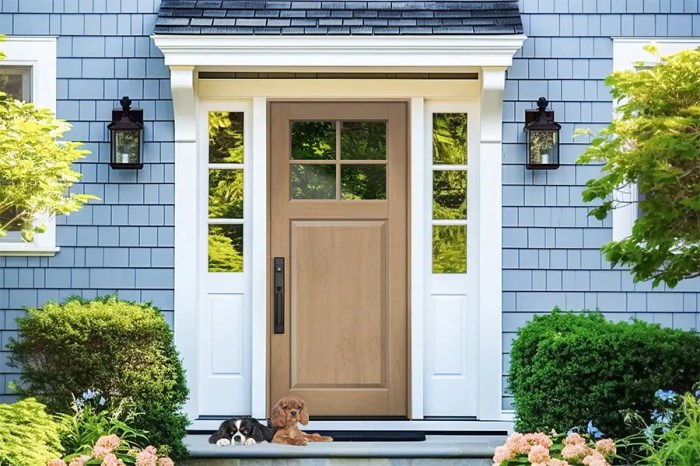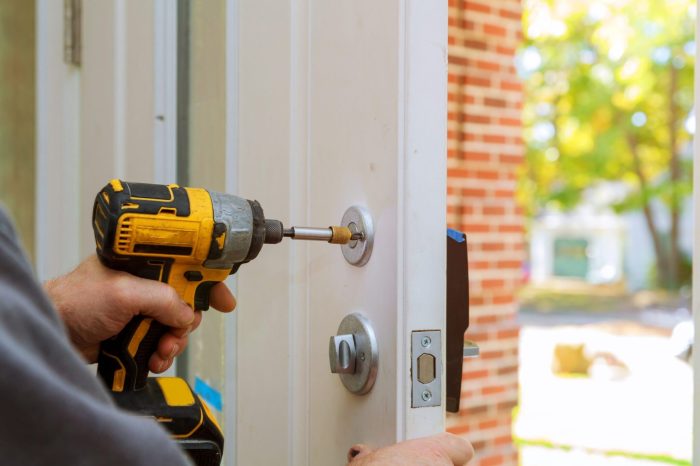The Impact of Building Envelopes on Indoor Air Quality
Exploring the relationship between building envelopes and indoor air quality sheds light on the crucial role these structures play in creating a healthy living environment. From regulating moisture levels to influencing energy efficiency, the impact of building envelopes is far-reaching and often overlooked.
Let's delve into the intricate connection between building envelopes and indoor air quality.
Introduction to Building Envelopes
Building envelopes play a crucial role in the overall structure of a building, serving as the barrier between the interior and exterior environments. They consist of various components that work together to provide thermal insulation, moisture control, and air quality regulation within the building.
Components of a Building Envelope
- The exterior walls
- The roof
- Windows and doors
- Insulation materials
- Vapor barriers
Importance of Building Envelopes in Regulating Indoor Air Quality
The building envelope plays a significant role in regulating indoor air quality by controlling the flow of air, moisture, and pollutants into and out of the building. A well-designed envelope can help prevent the infiltration of outdoor pollutants, maintain proper ventilation, and ensure optimal thermal comfort for the occupants.
Factors Influencing Indoor Air Quality
Indoor air quality is influenced by a variety of factors, including building materials, ventilation systems, and external environmental elements that interact with the building envelope.
Building Materials
Building materials play a crucial role in determining indoor air quality. Materials such as paints, adhesives, and carpets can release volatile organic compounds (VOCs) into the air, leading to poor indoor air quality. Additionally, materials like asbestos and formaldehyde can also pose health risks to occupants if not properly managed.
Ventilation Systems
Effective ventilation systems are essential for maintaining good indoor air quality. Proper ventilation helps to remove pollutants, moisture, and odors from indoor spaces, ensuring a healthier environment for occupants. Inadequate ventilation can lead to a buildup of indoor air pollutants and compromise the health and comfort of building occupants.
External Environmental Factors
External environmental factors, such as pollution, pollen, and dust, can infiltrate indoor spaces through the building envelope. Poorly sealed windows, doors, and walls can allow outdoor pollutants to enter the building, affecting indoor air quality. Properly designed building envelopes can help mitigate the impact of external environmental factors on indoor air quality, ensuring a healthier and more comfortable indoor environment for occupants.
Role of Building Envelopes in Moisture Control
Building envelopes play a crucial role in controlling moisture levels within a structure. By forming a barrier between the interior and exterior environments, building envelopes help regulate the amount of moisture that enters and exits a building.
Risks Associated with Moisture Infiltration
Moisture infiltration through the building envelope can lead to a range of issues that affect indoor air quality. Some of the risks associated with improper moisture control include:
- Mold and mildew growth: Excess moisture can create a conducive environment for mold and mildew to thrive, leading to potential health hazards for occupants.
- Degradation of building materials: Moisture infiltration can damage structural components of a building, compromising its integrity and potentially releasing harmful particles into the indoor air.
- Increased humidity levels: High humidity resulting from moisture infiltration can make indoor spaces feel uncomfortable and contribute to the growth of bacteria and other allergens.
Proper moisture control is essential to maintaining a healthy indoor environment and preventing these issues from arising.
Energy Efficiency and Indoor Air Quality
Indoor air quality can be greatly influenced by the energy efficiency of a building. When a building is energy efficient, it typically means that it is well-insulated and sealed, which can impact the ventilation and air circulation within the indoor space.
Poor ventilation can lead to the accumulation of pollutants, allergens, and other harmful particles in the air, affecting the overall indoor air quality.
Impact of Building Envelopes on Energy Efficiency and Indoor Air Quality
Building envelopes play a crucial role in balancing energy efficiency and indoor air quality. By incorporating proper insulation, air barriers, and moisture control measures into the building envelope design, it is possible to reduce energy consumption while ensuring good indoor air quality.
For example, a well-sealed building envelope can prevent outdoor pollutants from entering the indoor space, thus maintaining a healthier environment for occupants.
- Proper insulation: Insulating the building envelope effectively can help regulate indoor temperature, reducing the need for excessive heating or cooling, which can impact indoor air quality.
- Air barriers: Implementing air barriers can prevent air leakage and infiltration, which can help maintain consistent indoor air quality levels.
- Moisture control: Managing moisture within the building envelope can prevent mold growth and moisture-related issues that can degrade indoor air quality.
Conclusion

As we conclude our discussion on how building envelopes affect indoor air quality, it becomes evident that these structures are not merely outer layers of buildings but integral components that dictate the quality of the air we breathe indoors. By understanding the significance of building envelopes, we can strive towards creating healthier and more sustainable living spaces for all.
FAQ Explained
How do building materials impact indoor air quality?
Building materials can release volatile organic compounds (VOCs) that deteriorate indoor air quality over time. It's essential to choose low-emission materials to maintain a healthy indoor environment.
Can improper moisture control through building envelopes lead to health issues?
Yes, excessive moisture infiltration can promote mold growth, which can trigger respiratory problems and allergies among occupants, impacting indoor air quality negatively.
What are some examples of energy-efficient building envelope designs that prioritize indoor air quality?
Green roofs, high-performance windows, and properly sealed insulation are examples of energy-efficient building envelope features that enhance indoor air quality while reducing energy consumption.




